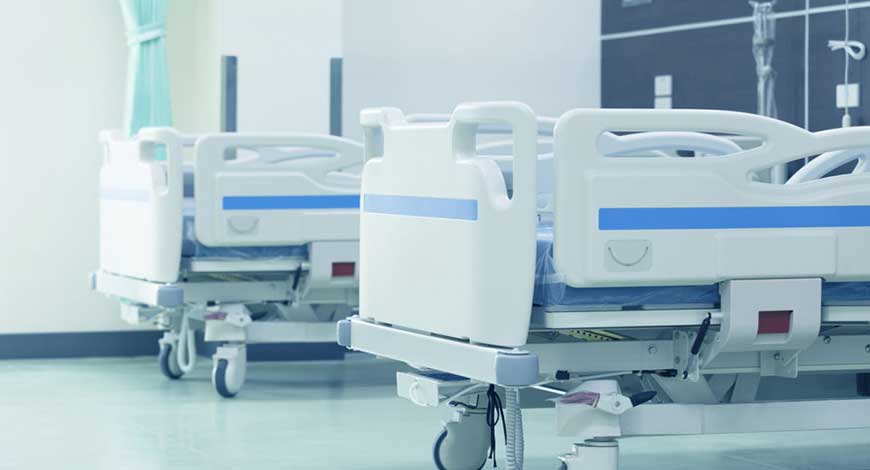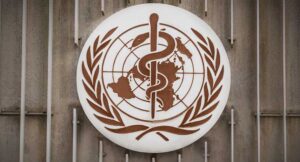Hospitals in England could axe more than 100,000 jobs as a result of the huge reorganisation and brutal cost-cutting ordered by Wes Streeting and the NHS’s new boss.
The scale of looming job losses is so large that NHS leaders have urged the Treasury to cover the costs involved, which they say could top £2bn, because they do not have the money.
Sir Jim Mackey, NHS England’s new chief executive, has told the 215 trusts that provide health care across England to cut the costs of their corporate functions – such as HR, finance and communications – by 50% by the end of the year.
But the NHS Confederation, which represents trusts, said some trusts believe complying with that edict could force them to shed anywhere between 3% and 11% of their entire workforce.
If replicated across the 215 trusts, that could lead to job losses ranging from 41,100 to 150,700, given they employ 1.37 million people.
Matthew Taylor, the NHS Confederation’s chief executive, said trusts were being asked to make such “staggering” savings that they might not be able to help banish the long delays patients faced for treatment.
He called on the Treasury to create an NHS “national redundancy fund” to foot the bill for job losses because trusts were already too cash-strapped to do so.
His intervention came as Streeting and Mackey prepared to be questioned by MPs on the Commons health and social care committee on Tuesday about their plans.
The NHS is bracing itself for an unprecedented loss of jobs after the decision by the health secretary to abolish NHS England and cut a huge number of managers.
About half of NHS England’s 15,300-strong personnel are set to lose their jobs when it is merged with the Department of Health and Social Care. The DHSC is also expecting some of its 3,300 staff to depart. A further 12,500 jobs could go at the NHS’s 42 integrated care boards – regional oversight bodies that employ 25,000 people between them.
Taylor said: “Health leaders understand the troubling financial situation facing the country and the need to improve efficiency where they can, as they have already demonstrated by significantly reducing their planned deficit for the year ahead.
“However, the scale and pace of what has been asked of them to downsize is staggering and leaves them fearful of being able to find the right balance between improving performance and implementing the reforms needed to put the NHS on a sustainable footing.
“They have told us that unless the Treasury creates a national redundancy fund to cover these job losses, any savings the government hopes to make risks being eroded at best and completely wiped out at worst.”
He said trusts needed financial stability in order to deliver the government’s forthcoming 10-year health plan.
Some trust heads are budgeting to spend as much as £12m making staff redundant this year, the Confederation said. But one said they were not planning a redundancy programme “as it will be unaffordable” and will instead use the natural turnover of staff to slim down.
Sarah Woolnough, the chief executive of the King’s Fund, highlighted research showing that only 14% of people in Britain think the NHS spends its money efficiently.
Despite that, she said, “the UK spends just 1.9% of its health budget on administration costs – the sixth lowest out of the 19 comparable countries measured”.
She added: “You need highly skilled and experienced people in key behind-the-scenes roles – including management and administration – in order to enable frontline staff to focus on delivering great care.
“In the drive to raise NHS efficiency, national politicians need to be aware that cutting cost is not the same as increasing efficiency.”
Thea Stein, the chief executive of the Nuffield Trust thinktank, echoed Woolnough’s caution about the cost-cutting drive.
She said: “There is certainly duplication and wasted time in NHS governance, but the government needs to be careful about exactly what gets cut.
“Corporate staff in NHS trusts include the digital specialists, analysts and recruitment professionals needed to improve NHS efficiency and keep wards staffed.”
The former NHS trust chief executive added: “Last year’s Darzi review, commissioned by the current government, noted that cuts in the last round of squeezing oversight bodies in 2013 left the NHS short on capable administration and ended up being reversed.”
In recent days several NHS trusts have outlined plans to shed hundreds of posts each, in a bid to meet what Taylor has called “challenging” efficiency savings targets for 2025-26.
The trusts, which provide care in Portsmouth and the Isle of Wight, plan to cut 798 whole-time equivalent posts, or about 7% of their combined workforce. They hope to save £39m, almost half their combined £82m savings target, the Health Service Journal reported.
Similarly, the trust that runs Bristol’s hospitals intends to shrink its workforce by 2%, in a move that could lead to more than 300 job losses.
NHS England told all 215 trusts to save 5% of their budget for this year through “cost improvement programmes” amid fears the service could overspend its budget by £6.6bn.
A DHSC spokesperson said: “We will work with the NHS to make the changes needed to get the health service back on its feet, and will focus on delivering for patients and taxpayers while also supporting staff.
“Our plans to bring NHS England back into the department will eliminate duplication, freeing up hundreds of millions of pounds for frontline care and better treatment for patients.
“We are investing an extra £26bn in health and care, and have already made progress on our mission to cut waiting lists – delivering an extra 2 million appointments seven months early and cutting the waiting list by 193,000 since July.” The Guardian








